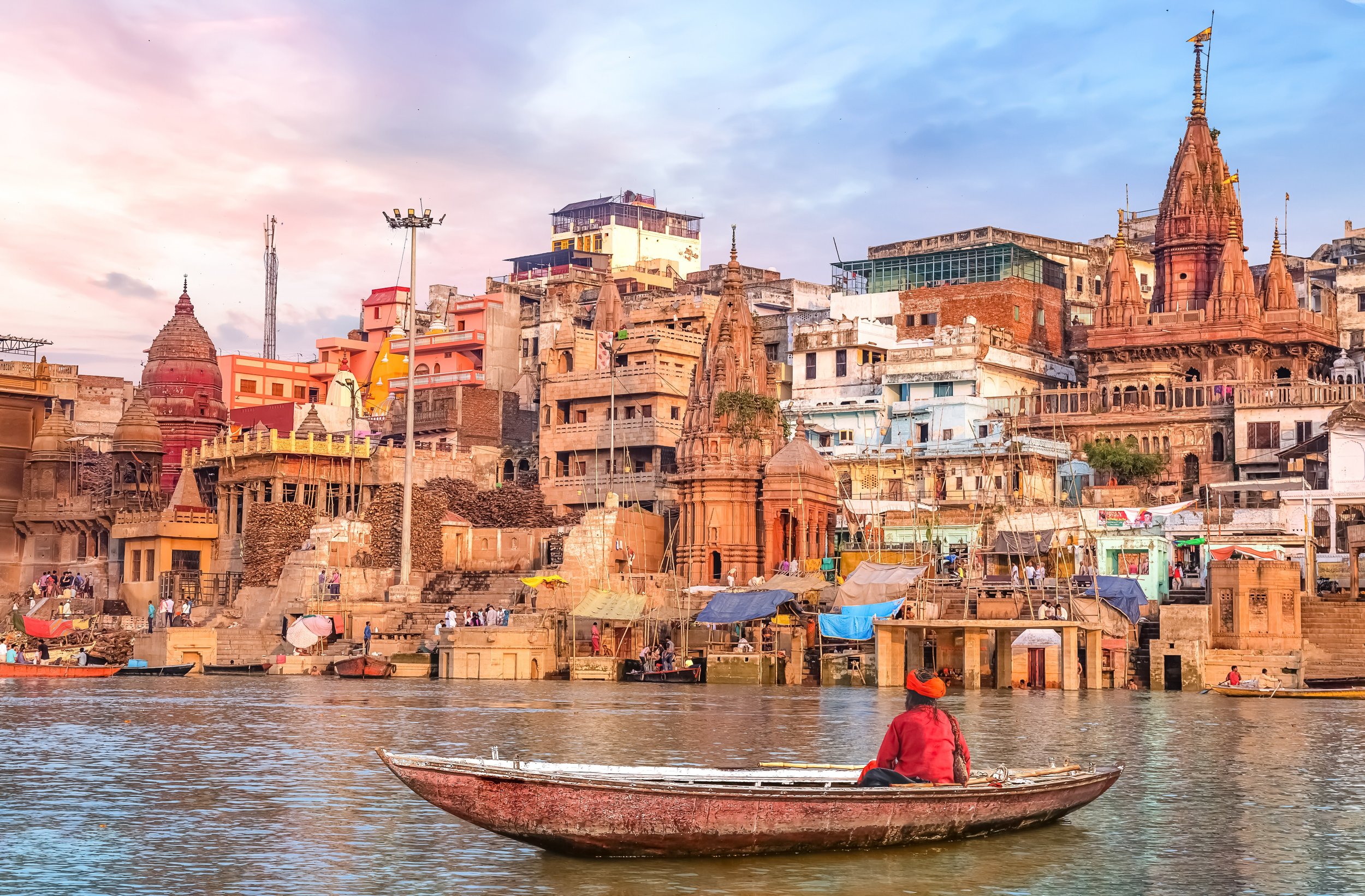Pilgrimage as a Portal
Ancient Varanasi city architecture at sunset
As I prepare to embark on my journey to India, I find myself reflecting deeply on the nature of pilgrimage. What is it that draws us across time and cultures, to step away from the familiar and into the unknown? What is it about the act of pilgrimage that has the power to transform us so profoundly?
For millennia, humans have undertaken pilgrimages - sacred journeys to places imbued with spiritual, historical, or personal significance. It is a sacred call to venture beyond, to seek something greater than ourselves. Pilgrimage takes many forms. The common thread among them all is the deep intention with which they are undertaken. A pilgrimage is not merely travel; it is a conscious engagement with the mysteries of life, a surrender to the journey’s unfolding wisdom.
Religious Pilgrimage
Religious pilgrimages are among the most well-known forms, undertaken by those seeking spiritual renewal, divine blessings, or a deeper connection to their faith. Examples include Muslims traveling to Mecca for Hajj, Hindus journeying to the sacred Ganges River, or Christians walking the Camino de Santiago. These pilgrimages are often guided by religious doctrine and ritual, reinforcing one’s connection to the divine.
Cultural and Historical Pilgrimage
Some pilgrimages are undertaken to honor history and cultural heritage. Walking the paths of one’s ancestors, visiting sites of historical significance, or retracing the journeys of influential figures can be a deeply moving experience. Examples include visiting battlefields, ancestral lands, or places where significant cultural shifts occurred, like the civil rights landmarks in the United States.
Personal Pilgrimage
A personal pilgrimage is a journey of self-discovery, healing, or transformation. These pilgrimages are often less about a specific location and more about the internal journey they facilitate. Many take solo journeys into nature, embark on retreats, or travel to places that hold deep personal meaning. The goal is to return transformed, having encountered new insights or inner peace.
It is this intentionality that makes pilgrimage akin to another sacred act of transformation: the psychedelic ceremony. When we engage with plant medicines, we step onto a path of deep exploration, one that mirrors the structure of the pilgrimage itself. Just as pilgrims must prepare, surrender, and integrate, so must those who enter the ceremonial space.
A true pilgrimage begins long before the first step is taken. Preparation is key—physically, emotionally, and spiritually. One must consider what they are leaving behind, what they are hoping to encounter, and what intentions guide their journey. Similarly, before engaging with psychedelics in a ceremonial context, setting intentions is crucial. What are you seeking? What questions weigh on your heart? What truths do you wish to uncover?
Then comes the journey itself. On pilgrimage, there is a moment when the path takes over, when the destination becomes secondary to the experience itself. The road offers its own lessons, its own challenges, and revelations. In a psychedelic journey, this surrender is even more palpable. Once the medicine begins to work, control must be relinquished. One must allow the experience to unfold, trusting that whatever arises—be it bliss, discomfort, insight, or mystery—is part of the greater teaching.
Finally, there is the return. A pilgrimage does not end upon arrival at the sacred site; rather, the true journey begins when one returns home. How do you integrate what you have seen, felt, and learned? How do you weave the experience into the fabric of your daily life? This is precisely the work of integration—learning how to hold the wisdom gained, how to act upon newfound clarity, and how to reshape one’s life in alignment with the insights received.
As I prepare for my pilgrimage to India, I hold these reflections close to my heart. I do not know what awaits me on this journey, but I do know that I am stepping into it with reverence and intention. I know I will meet myself in new ways, encounter truths I cannot yet see, and return with a deeper understanding of my place in the great unfolding mystery of life.
And so, I invite you to consider: What pilgrimage calls to you? It need not be to a distant land—it may be a journey into your own depths, a conscious crossing of an internal threshold. It may be a pilgrimage of the heart, a return to a forgotten part of yourself. Whatever it is, step toward it with openness and devotion. The path is waiting, and it has much to teach you.

